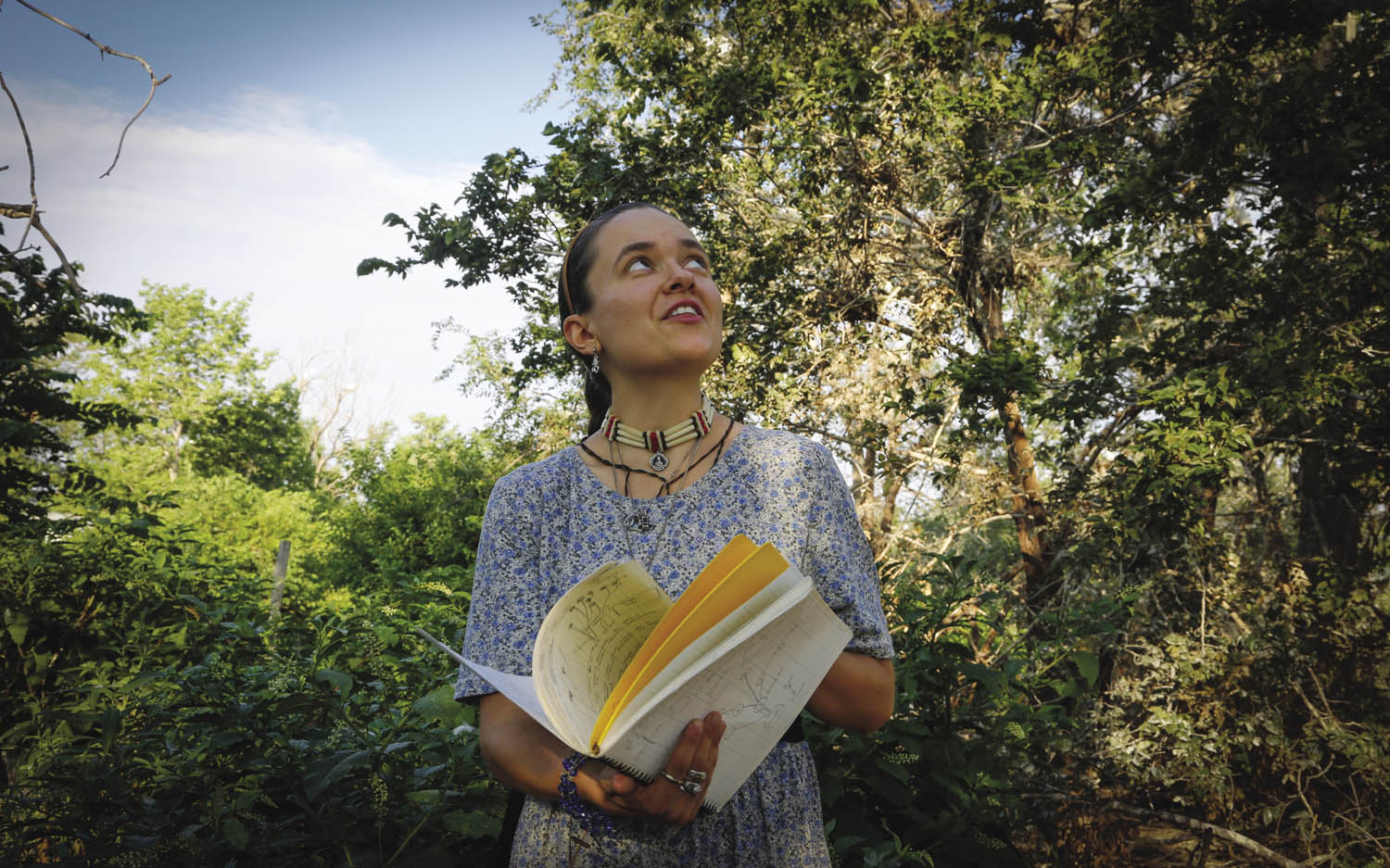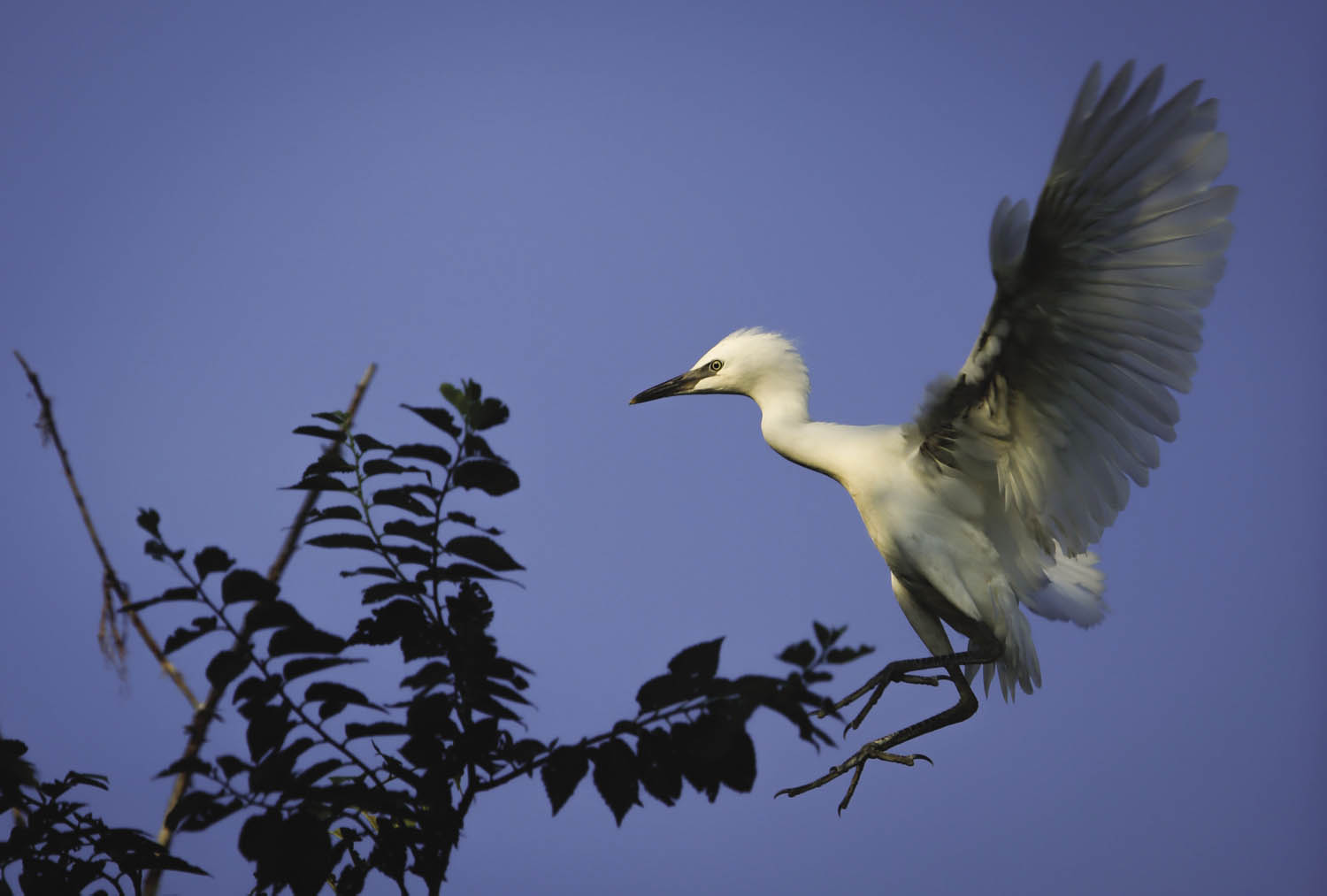
For about 25 years, migratory egrets have been calling Wichita home during Kansas’ warmer months. “They stay here as late as November,” says Wichita State graduate student Hannah Holden.
Holden, who grew up in Wichita and earned a bachelor’s degree in zoo science from Friends University, is studying snowy egrets while pursuing her master’s degree in biological sciences at WSU. She says she first became interested in egrets while taking classes from professor Alan Maccarone at Friends.
“Prior to this I had always been primarily a ‘herper,’” she says, using the term describing those who search for or keep amphibians or reptiles. “My main pursuits included hunting, such as deer, squirrel, catfish noodling (hand-fishing) and snake catching.” Holden plans to graduate in 2016, and would like to share her love of science by becoming a teacher. One avenue she has contemplated is joining the Sisters of the Immaculate Heart of Mary, an order of sisters dedicated to teaching.
When Holden decided to attend graduate school, a program that allowed her to study egrets was a must. “I decided to come to WSU to pursue my degree because I am a local kid and the cost was a bit better,” she says. “There were a few private and out-of-state programs I was considering where I could have researched egrets in specialized programs.” In addition to a convenient location, she found support for her research at WSU.
“I would like to convey my thanks toward my advisor for birds, Dr. Chris Rogers, and especially toward my methodologist who helped me organize my raw data into a spreadsheet, Dr. Paul Ackerman of WSU’s psychology department,” she says.
“She applied to the program, was accepted, and we met and found mutual interest in studying bird populations,” says Rogers, who is a biological sciences professor and WSU Field Station research director. “Bird populations, including egrets and herons, may maintain viable populations in urban environments due to lack of predators. We are testing this idea in the urban heron colony in Wichita, using snowy egrets as a model species. Bird populations in natural landscapes may face higher rates of nest predation.”
Holden learned about Wichita’s migratory egrets as an undergraduate student. “I knew we had several egret and heron species locally, but I learned of our local colony through serving as a field assistant to Dr. Maccarone and John Brzorad of Lenoir Rhyne University,” she says. “The egrets usually arrive in early April, the average being about April 10.”
According to Holden, egrets spending the warmer months in Wichita number in the thousands. “There have always been around 1,000 pairs,” she says. “There might be 2,000 pairs this year.”
“I have spent two decades studying songbird demography and conservation, and this is my first foray into larger birds like egrets, which are also waterbirds,” adds Rogers. “Egret nests in obvious colonies are extremely easy to locate, unlike the very cryptic nests of most songbirds.”
While the egrets are in Wichita, Holden checks 30 nests every few days during the April to June nesting period to gauge the nests’ success. “Successful is one or more offspring leaving the nest after 14 days,” she explains. “All my nests were successful except five that fell over during storms.”
Rogers hopes Holden’s research will be able to provide deeper insight into whether or not birds in an urban environment survive better than those who live outside of urban areas.
Holden is focusing her research on snowy egrets, one of five egret species living in the trees on North Doris, which is near 13th Street and I-235. “My research is very important because the snowy egret is well known as our nation’s most beautiful egret,” she says. “It’s even the emblem for the Audubon Society. Conservation of this species is important.”
Holden says each snowy egret nest is usually home to four eggs, although she occasionally notices nests with five eggs. To make sure she always checks the same 30 nests, she enlisted the help of Jenny Bowen, an undergraduate student at Wichita State. “She sketched them,” says Holden, who also numbered the sketches. “She was a big help.” That way, anyone who assisted Holden could easily help direct her to the right nests in each tree. To take a look into the nests, Holden uses an 8-foot ladder and has a mirror that extends to 15 feet. Each time she checks a nest, she records her observations on a note card.
Although sometimes precariously perched when she checks the egrets by herself, she has cut the time it takes in half. “It was taking around three hours initially,” she says. “I got it down to one-and-a-half.”
Although there are no more newly hatched birds for Holden to check on since the nesting period has ended, she still enjoys visiting the egrets. “I do personal observations from sheer interest during the remainder of their time in Wichita before they again migrate south toward Central America,” she says.
When the egrets return in April 2014, Holden will once again be a regular visitor to their habitat. She will keep a watchful eye on the egrets — and continue to record and share what she learns about them.






